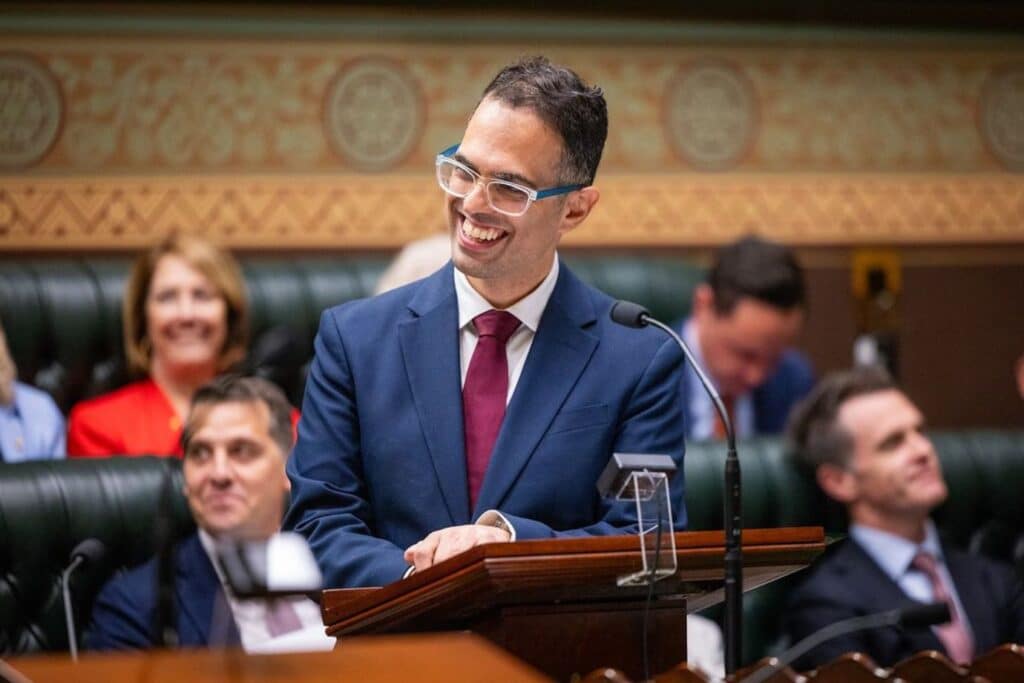More than 3,000 new homes that are to be built by the NSW government will be prioritised for victims of family and domestic violence, the state budget has revealed.
NSW Premier Chris Minns and Treasurer Daniel Mookhey unveiled the 2024-2025 NSW State Budget on Tuesday, with some positive measures to assist victims of family and domestic violence, to ease the pressure on the state’s health system and to provide more social housing for lower income earners.
The state government had a challenging task ahead, revealing an expected $3.6 billion deficit this coming financial year. While there are no clear measures to address cost of living pressures as there have been in previous budgets, the Minns government has prioritised family and domestic violence victims, low income earners, the healthcare system, schools and frontline workers.
Here are the main takeaways from the 2024-25 NSW State Budget.
Women: Domestic and family violence, but not much else
Last month, the NSW government pledged $230 million to tackle domestic, family and sexual violence through a range of reforms including specialist staff funding, a primary prevention scheme and a program supporting women and their children to remain safe in their homes after leaving a violent relationship.
Today’s budget pointed to this commitment, adding the government would be dedicating at least half of new social housing to victims of family and domestic violence.
The government predicts this will help around 3,100 vulnerable people fleeing a violence situation accessing safe and affordable housing.
There is also an allocated $131 million for maternal and child health programs to support women and their families.
There are no packages directly addressing other aspects of gender equality. In last year’s budget, the government funded programs that boosted women’s workforce participation, women’s health, women in sport and more.
Healthcare: Bulk billing and hospital upgrades
While Medicare bulk billing is a federal government initiative, the NSW government has allocated funds to increase the number of GP clinics in the state that can bulk bill.
Over the next four years, the government has committed $189 million to reduce the cost of running a GP clinic, which will allow more GPs to bulk bill their patients. The government also plans to spend $104 million to waive all historical payroll tax liabilities for GP clinics.
As an incentive to get clinics to offer bulk billing to more patients, the government will offer a payroll tax rebate for GP clinics who bulk bill more than 80 per cent of their patients in Sydney, and clinics who bulk bill more than 70 per cent of their patients in the rest of NSW.
Many Australians rely on bulk billing to access healthcare: according to the NSW government, a 1 per cent decrease in bulk billing means there are an additional 3,000 emergency room presentations.
To address the pressures on hospitals, the NSW government announced $481 million in spending to help hospital emergency departments under pressure.
Around $3.4 billion will be poured into upgrading NSW hospitals and health facilities: nearly $1 billion of this will go towards facilities in rural and regional NSW.
Housing: Historic investment
The government has set aside $5.1 billion in public housing funding to build 6,200 new homes and replace 2,200 existing homes. Half of these homes, owned by the state body Homes NSW, will be for victims of family violence. It is the biggest investment in government housing in NSW’s history.
The Minns government has also pledged $1 billion to repair 33,500 existing homes in public and social housing. About $200 million of this will be directed to the Aboriginal Housing Office.
Essential workers, including nurses and paramedics, will benefit from a $650 million investment for build-to-rent housing programs in rural and regional NSW. About 400 homes will be built for essential workers in Sydney, and about 500 for workers in regional parts of the state.
Schools
Nearly $9 billion of funding will go towards building new schools or upgrading existing ones. A large portion of this – $3.6 billion – will be directed at Western Sydney, where more than 60 new schools are expected to be built.
Regional schools to be built or upgraded will receive $1.4 billion of government spending.
Are there any budget losers?
This year’s budget will hurt property investors in NSW, as changes to the land tax thresholds mean investment properties that exceed $1.075 million will need to pay land tax.
Foreign investors will also need to pay a 9 per cent duty surcharge (increased from 8 per cent last year), and a 5 per cent land tax surcharge (up from 4 per cent last year).
These measures are expected to raise more than $1.5 billion in budget revenue over the next four years.
You can find out more on the 2024-25 NSW Budget here.

